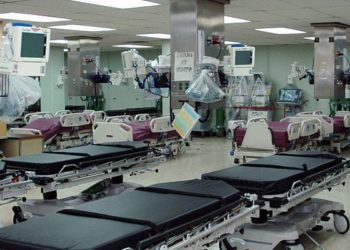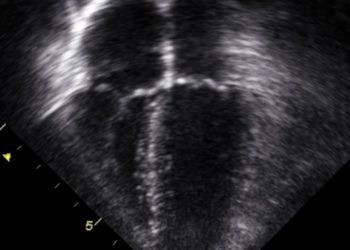Clinical impression not reliable in identifying drug-seeking behavior
Image: PD Neuronal growth cone
1. Emergency providers’ clinical impression was moderately sensitive and specific in identifying drug-seeking behavior, as defined by prescription drug monitoring criteria.
2. In approximately 1 in 10 cases, providers changed their prescription plan for patients after reviewing data from a drug monitoring program.
Evidence Rating Level: 2 (Good)
Study Rundown: Pain control in the emergency department (ED) setting remains a controversial topic – with data to suggest poor pain control in the ED and upon discharge on the one hand, and rising rates of opioid prescriptions, abuse, and overdose on the other. In an attempt to limit opioid abuse, many states have implemented prescription drug monitoring programs. In comparing emergency providers’ clinical impression of drug-seeking behavior with an objective definition of this behavior from a state monitoring program, this study demonstrates that providers’ ability to identify drug seekers was limited, with a tendency to overcall drug seeking. These findings suggest that objective criteria from prescription drug monitoring programs may help health care providers balance providing appropriate analgesia without contributing to prescription drug misuse. However, these conclusions rest on the assumption that the investigator’s definition of drug-seeking behavior (greater than equal to 4 opioid prescriptions by greater than or equal to 4 providers in the prior 12 months) accurately captures patients’ “questionable activity” surrounding prescription medications. In order to fully ascertain the usefulness of drug monitoring programs in identifying problematic behavior, further research is necessary to determine how patient behavior in the ED predicts unfavorable outcomes such as opioid abuse and overdose.
Click to read the study in Annals of Emergency Medicine
Relevant Reading: Undertreatment of acute pain in the emergency department: a challenge
In-Depth [prospective observational study]: compared emergency provider impression of drug-seeking behavior with objective criteria from Massachusetts’ prescription drug monitoring program. As secondary endpoints, investigators attempted to determine whether information from the prescription drug monitoring program changed prescribing behavior (and in what direction) and whether there are demographic or clinical factors associated with drug-seeking behavior. Thirty-eight emergency providers completed data forms on a convenience sample of 544 patients aged 18 to 64 years who presented to either of 2 medical centers with chief complaint of back pain, dental pain, or headache. Investigators calculated agreement between data forms (which recorded providers’ impression of drug-seeking likelihood, patient characteristics, and plan for prescribing) with the objective definition of drug-seeking behavior (patient had greater than equal to 4 opioid prescriptions by greater than or equal to 4 providers in the prior 12 months) from the state prescription drug monitoring program.
There was modest agreement between emergency provider impression of drug-seeking behavior and prescription drug monitoring program; providers had a sensitivity of 63.2% (95% CI 54.8-71.7%), specificity 72.7% (95% CI 68.4-77%), and positive predictive value 41.2% (95% CI 34.4-48.2%). Exposure to prescription drug monitoring program data changed providers’ plan to prescribe opioids in 9.5% of cases – 6.5% were prescribed opioids not previously planned while 3% no longer received opioids. A number of factors were shown to be significant predictors for drug-seeking behavior, including: requesting opioid medication by name (OR 1.91, 95% CI 1.13 to 3.23); multiple visits for same complaint (OR 2.5, CI 1.49 to 4.18), suspicious history (OR 1.88, 95% CI 1.1 to 3.19), symptoms out of proportion to exam (OR 1.83, 95% CI 1.1 to 3.03), and hospital site (OR 3.1, 95% CI 1.76-5.44).
By Elizabeth Kersten and Andrew Bishara
© 2013 2minutemedicine.com. All rights reserved. No works may be reproduced without written consent from 2minutemedicine.com. Disclaimer: We present factual information directly from peer reviewed medical journals. No post should be construed as medical advice and is not intended as such by the authors or by 2minutemedicine.com. PLEASE SEE A HEALTHCARE PROVIDER IN YOUR AREA IF YOU SEEK MEDICAL ADVICE OF ANY SORT. Content is produced in accordance with fair use copyrights solely and strictly for the purpose of teaching, news and criticism. No benefit, monetary or otherwise, is realized by any participants or the owner of this domain.







